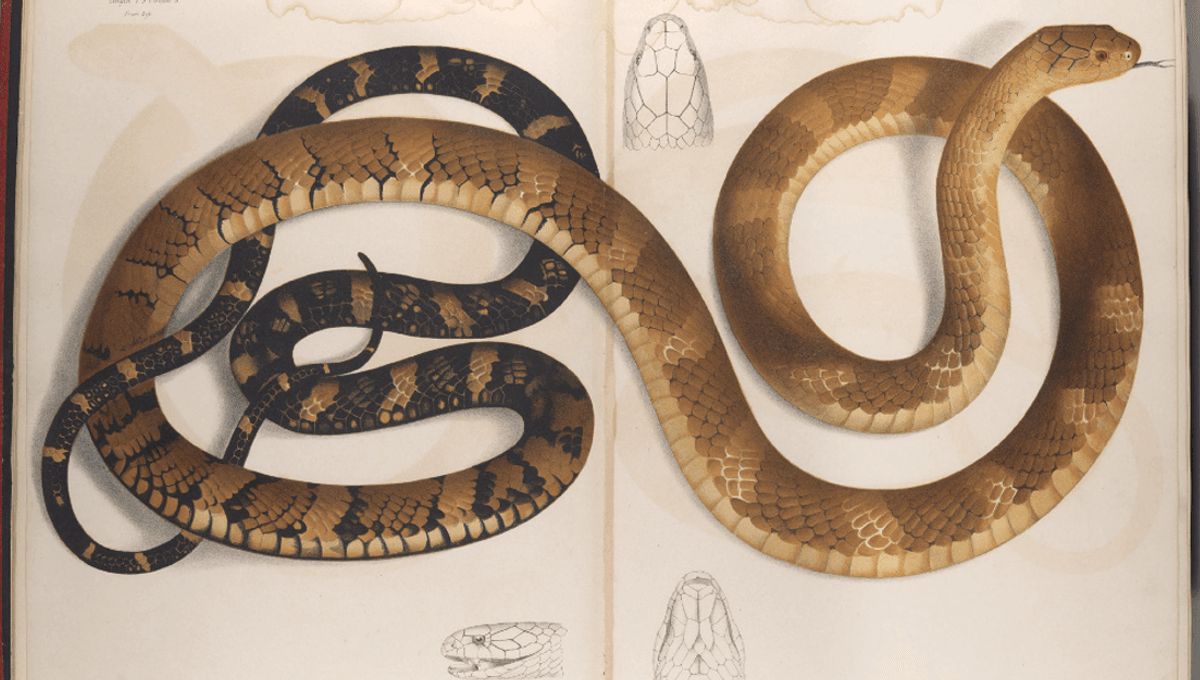
There are always more species to be discovered. Whether it is a bizarre-looking worm lizard or something that has been hidden in a drawer for decades, the implications for naming something new can include helping with conservation as well as other benefits. Now the king cobra has received the same treatment, with researchers putting in the work over many years to discover it’s actually four separate species instead of one.
King cobras (Ophiophagus hannah) live across most of Asia, from India and China to the Philippines and the Sunda Islands. King cobras are the world’s longest venomous snakes that can grow to 5.6 meters (19 feet) in length. Technically they are not actually true cobras, belonging to the genus Ophiophagus, rather than the Naja genus. The clues that they might be different species came in the wide range of differences in appearance between populations across these countries. Despite this the king cobra has been classed as a single, but highly variable, species since 1836.
“I feel like we created history,” study lead researcher P. Gowri Shankar told Mongabay.
In 2021, Gowri Shankar and colleagues discovered that there was genetic variation across four distinct populations of king cobras throughout their range. Now, the new study has found differences both in the snakes physically, and in banding patterns found on the snakes’ scales. Looking at 153 specimens, including five skeletal specimens, the team performed morphological and genetic analyses.
“Adults from the Luzon population, unlike juveniles, do not possess any discernible pale bands. In adult O. salvatana sp. nov., the bands in adults are faint and barely discernible, producing a mottled, near unbanded appearance. The northern lineage, O. hannah, shows a lower number of bands compared to O. bungarus, which possesses many more bands,” write the authors in their new paper.
The four species have been named the Northern king cobra (Ophiophagus hannah), Sunda king cobra (Ophiophagus bungarus), Western Ghats king cobra (Ophiophagus kaalinga) – found unsurprisingly in the Western Ghats of the Indian peninsula – and the Luzon king cobra (Ophiophagus salvatana), found only on the island of Luzon in the northern Philippines.
The genus name “Ophiophagus” is in reference to the cannibalistic nature of king cobras, which primarily consume other snakes as well as small mammals. The name is taken from the Greek ophis for “snake” and phagos for “eater”, explain the authors. The genus name was previously Hamadryas, but this was formally changed in 1945.
The implications for the new species names are also important. With new names and ranges for each of the four species, conservationists have to be extra vigilant about changes to these areas.
“It is our hope that their status as unique regional representatives of an iconic genus will inspire local human populations to view them with pride, as is the case in some places already (e.g., Karnataka, India), rather than revulsion and fear.”
In particular the much smaller ranges that belong to O. kaalinga, and O. salvatana may be at risk, whether through climate change, habitat destruction, or natural disasters.
“This, and future, taxonomic revisions of the king cobra are of particular importance for the conservation of these, the world’s largest venomous snakes. Recognising biological diversity is crucial to its assessment and conservation, and naming and listing species remains a typically essential precondition for conservation policy and action. In particular, failure to recognise units of biodiversity can potentially lead to their endangerment or extinction through neglect,” write the authors in the paper.
The revisions are also important for antivenoms. Currently only one antivenom exists for the king cobra, but the researchers suggest that a further three could be made to better counteract the effects from all of the variations in the venoms of each different species.
The study is published in the European Journal of Taxonomy.
Source Link: After 188 Years The World’s Longest Venomous Snake Is Officially Four Species, Not One